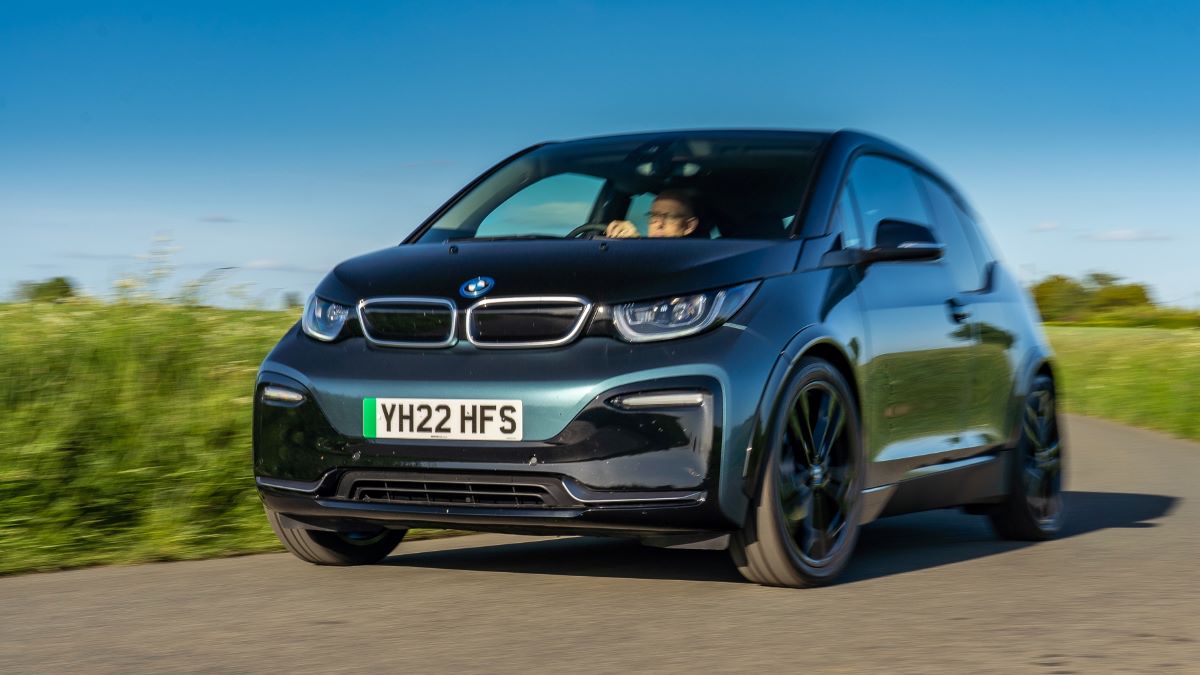Electric vehicles (EVs) have taken center stage in the global shift toward sustainable transportation. With the push for cleaner energy and reduced dependence on fossil fuels, consumers and governments alike are leaning heavily into electrification.
However, while EVs boast benefits like lower operating costs, quieter rides, and zero tailpipe emissions, one of the most critical and often misunderstood, elements of EV ownership is battery degradation. Just like the battery in your smartphone, an EV battery doesn’t last forever.
Over time and mileage, it slowly loses its capacity, resulting in shorter driving ranges and reduced performance. But how much capacity is lost and how quickly, can vary drastically between different models and manufacturers.
Many new EV buyers are often drawn to the impressive range figures quoted on marketing materials, yet few stop to consider how those figures hold up after tens of thousands of miles. This matters more than ever today, as used EV markets grow and first-generation models enter their second and third ownership cycles.
For buyers on a budget or those looking to keep a car for the long haul, understanding how well a vehicle’s battery holds up after 100,000 miles is a crucial factor in choosing the right EV.
Some EVs maintain over 80% of their original battery capacity after a long road life, while others can lose a quarter or more of their range, sometimes even faster under certain conditions.
Battery degradation is influenced by a host of factors, including cell chemistry, battery size, cooling systems, software algorithms, and even geography. EVs that use lithium iron phosphate (LFP) or well-managed NMC chemistries often fare better over time.
Vehicles with liquid-cooled battery packs tend to have more consistent degradation curves, particularly when used in extreme climates. On the other hand, EVs without active thermal management, especially those released in the earlier phases of mass EV adoption, tend to suffer from faster range loss, particularly in hot or cold environments.
The way you drive and charge also plays a role. High-speed driving, frequent fast-charging, or habitually charging to 100% can all contribute to faster wear.
Some automakers, like Tesla and Hyundai, have made significant investments in intelligent battery management systems (BMS), which actively monitor and adjust how the battery charges, discharges, and cools. These systems help reduce stress on the battery cells and extend usable lifespan.
In contrast, other manufacturers, particularly those who initially built EVs just to meet regulatory requirements (known as “compliance cars”), did not place the same emphasis on long-term battery health, resulting in cars that lose capacity more rapidly than they should.
The gap in battery retention between top-tier and bottom-tier EVs can be startling when viewed over a 100,000-mile span.
This article breaks down ten electric vehicles into two categories to help you understand which EVs are built to go the distance and which may disappoint you over time. First, we’ll explore five EVs known to retain at least 80% of their original battery capacity after hitting the 100,000-mile milestone.
These models have shown real-world resilience and are backed by engineering decisions that prioritize long-term value. Then, we’ll turn our attention to five EVs that lose range quickly, sometimes falling below usable levels well before reaching the 100,000-mile mark.
Whether you’re shopping for a used EV, trying to forecast your current vehicle’s long-term value, or just curious about how EV technology is maturing, this breakdown will provide clear, experience-based insights into which vehicles stand the test of time and which ones fall short.
By the end, you’ll have a clearer understanding of how different automakers approach battery durability, what technologies contribute to better longevity, and what warning signs to watch for when considering an EV that’s already been around the block. After all, in a world where battery range is king, preserving that range matters more than ever.
Also Read: 5 Legendary Japanese Cars and 5 That Hurt the Reputation
5 EVs That Maintain 80% Battery After 100,000 Miles

1. Tesla Model 3 (Long Range / Standard Range Plus)
The Tesla Model 3 has quickly established itself as one of the most enduring and reliable electric vehicles on the road, not only in terms of performance and tech but also in battery longevity.
As the most popular EV in the world by volume, there’s a vast amount of user-reported data that points to its long-term reliability, especially regarding battery retention.
Many owners of the Long Range and Standard Range Plus trims have reported retaining over 85% of their original battery capacity even after driving more than 100,000 miles.
This is a testament not only to the underlying battery chemistry but to Tesla’s advanced thermal management system and its proprietary battery management software, which work harmoniously to protect the pack from excessive heat, deep discharge cycles, and overcharging.
A major reason the Model 3 performs so well over time is due to Tesla’s innovative approach to battery design and control.
The company employs either NCA (Nickel Cobalt Aluminum) or LFP (Lithium Iron Phosphate) chemistries depending on the model and market. LFP batteries are particularly durable and can withstand more full charge cycles without the same level of degradation experienced by NCA cells.
Moreover, Tesla’s deep integration of software allows the vehicle to constantly monitor and adjust power delivery, charge limits, and temperature management in real time, making sure the battery is operating in an optimal environment. This continuous calibration allows the battery to be used more efficiently and safely, even as it ages.
Another critical element is Tesla’s cooling system, which is one of the best in the industry. Unlike earlier EVs that relied on passive or air-based cooling, the Model 3 uses a liquid-cooled thermal management system that circulates coolant throughout the battery pack.
This ensures even temperature distribution and avoids hot spots, which are known to accelerate degradation. The cooling system becomes especially important during Supercharging sessions, where battery temperatures can spike due to the high current being pushed into the pack. Tesla’s system mitigates this risk, helping the battery maintain its integrity even under high-stress conditions.
Finally, Tesla’s approach to charging behavior has improved with over-the-air updates. The system now includes adaptive charge limits based on battery health, and users are encouraged to charge only to 80–90% for daily use unless a full range is needed for a trip.
Furthermore, Tesla vehicles provide robust battery health data and insights, allowing owners to track long-term battery capacity loss.
This transparency empowers users to adopt healthier charging habits, contributing to the high retention of battery capacity even as the odometer creeps past six digits. The Model 3 is, without a doubt, a leader when it comes to retaining battery life over the long haul.

2. Chevrolet Bolt EV
The Chevrolet Bolt EV is an unsung hero in the world of electric vehicles, especially when it comes to long-term battery durability. While it may not have the brand prestige or flashy marketing of Tesla, the Bolt quietly delivers dependable performance and impressive battery resilience, often retaining up to 85–90% of its original range after 100,000 miles.
General Motors took a conservative engineering approach with the Bolt, designing it with practicality in mind rather than bleeding-edge performance. That conservative design includes thoughtful decisions around thermal management, cell chemistry, and energy flow, all of which contribute to the Bolt’s solid reputation for long-term reliability.
The Bolt’s battery chemistry, primarily NMC (Nickel Manganese Cobalt), has proven to be a good balance between energy density and longevity. It isn’t quite as durable as LFP, but the way GM packages and manages it makes a huge difference. One standout aspect is the large usable buffer zones built into the pack.
Even when the user interface shows the battery as full or empty, the software prevents the battery from reaching true 100% or 0% states. These extreme states are where the most degradation typically occurs. By avoiding them, GM protects the most vulnerable parts of the battery, reducing the stress per cycle and increasing total cycle life.
Thermal regulation is another major win for the Bolt. The liquid-cooled battery system efficiently manages heat during charging and driving, which helps prevent long-term thermal damage.
This becomes especially important in climates with high ambient temperatures or during periods of high energy throughput, such as highway driving or fast charging.
While the Bolt does support DC fast charging, its slower peak charging speeds (limited to around 55 kW in earlier models) ironically help with battery health. Slower charging means less internal resistance heating and less chance of damaging the cells over time.
Additionally, the Bolt’s modest power output and acceleration profile ensure that the battery is not consistently being pushed to its limits. Unlike high-performance EVs that prioritize torque and speed, the Bolt encourages gentle driving habits, which are more forgiving on the battery.
When combined with software updates from GM and cautious user behavior like charging to 80% and avoiding frequent fast-charging sessions, the Bolt demonstrates excellent long-term battery integrity. It’s a practical and reliable EV that quietly delivers exactly what long-term owners want: stability, predictability, and very little drama.
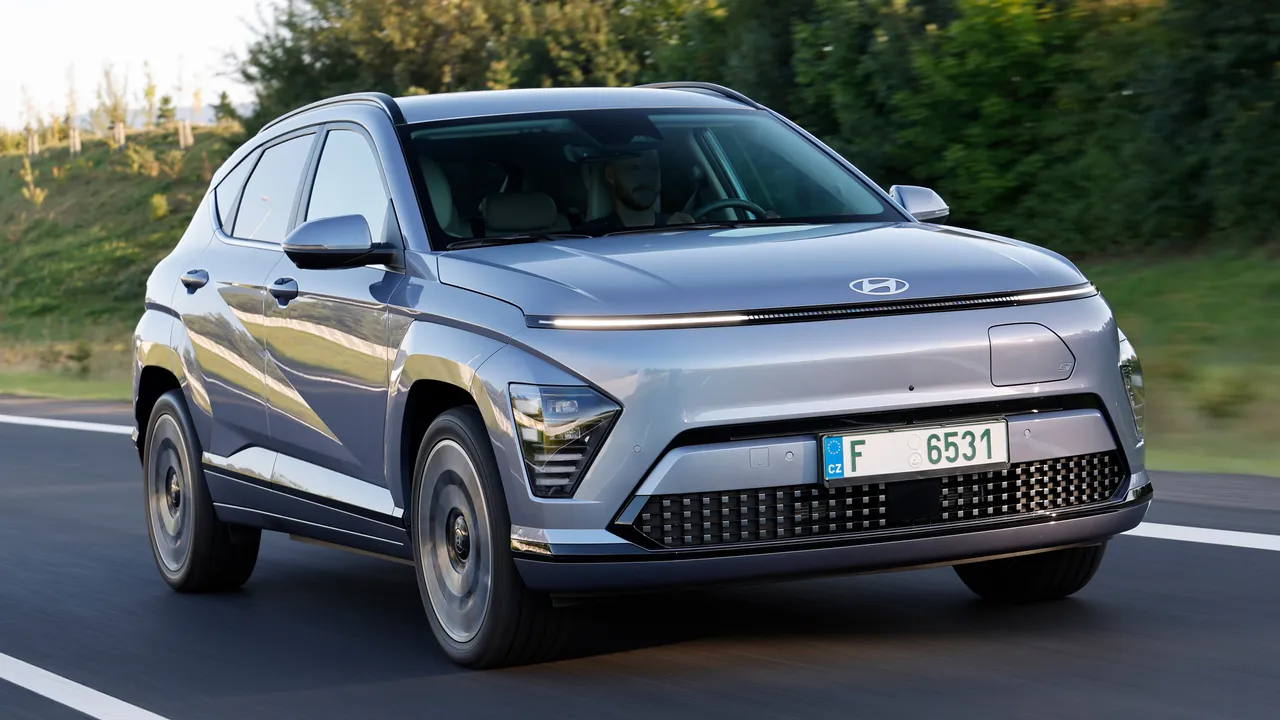
3. Hyundai Kona Electric
The Hyundai Kona Electric is a strong example of how smart engineering and a balanced approach to performance can result in impressive battery longevity. With a 64 kWh battery pack and a front-wheel-drive configuration that emphasizes efficiency, the Kona Electric is designed to maximize energy use while minimizing battery stress.
Owners of the Kona Electric frequently report 10–15% degradation even after exceeding 100,000 miles, which places it among the most durable consumer EVs in its class.
The vehicle’s longevity is driven by a combination of hardware protections, intelligent software limits, and careful thermal management, all working together to keep the battery in a stable and healthy condition.
Hyundai’s use of high-quality NCM 622 (Nickel Cobalt Manganese) battery chemistry offers a compelling mix of energy density and durability. Although this chemistry can be more vulnerable to high temperatures than LFP or NCA, Hyundai’s system compensates with excellent temperature regulation.
The Kona features a liquid cooling system that actively maintains battery temperature within a narrow operating window, reducing heat-related stress that can lead to early capacity loss.
Even under fast-charging conditions or in hot climates, the system has proven capable of limiting thermal runaway, making the Kona a reliable option for long-term use.
Another advantage lies in Hyundai’s conservative software settings. While many EVs allow users to regularly charge to 100%, the Kona often caps charging at slightly less than full capacity and alerts users when full charges might be unhealthy. It also incorporates automatic tapering at higher charge levels and limits the peak charge rate to ensure battery health is preserved.
The fast-charging curve is deliberately designed to flatten out early, helping reduce the amount of heat generated during high-voltage charging sessions. These minor slowdowns translate into significant improvements in battery longevity, especially for urban drivers who rely on fast charging.
Efficiency is another factor that plays heavily in the Kona Electric’s favor. With an EPA-rated range of over 250 miles and strong real-world results, the vehicle squeezes more miles out of each kWh than many competitors. Because the battery is not working as hard to provide every mile of range, the wear and tear on the cells is reduced.
Over time, this lower load profile means less heat, fewer full-discharge cycles, and overall reduced degradation. Combined with Hyundai’s generous battery warranty and a track record of solid build quality, the Kona Electric stands out as a long-distance workhorse that won’t let its range vanish too soon.
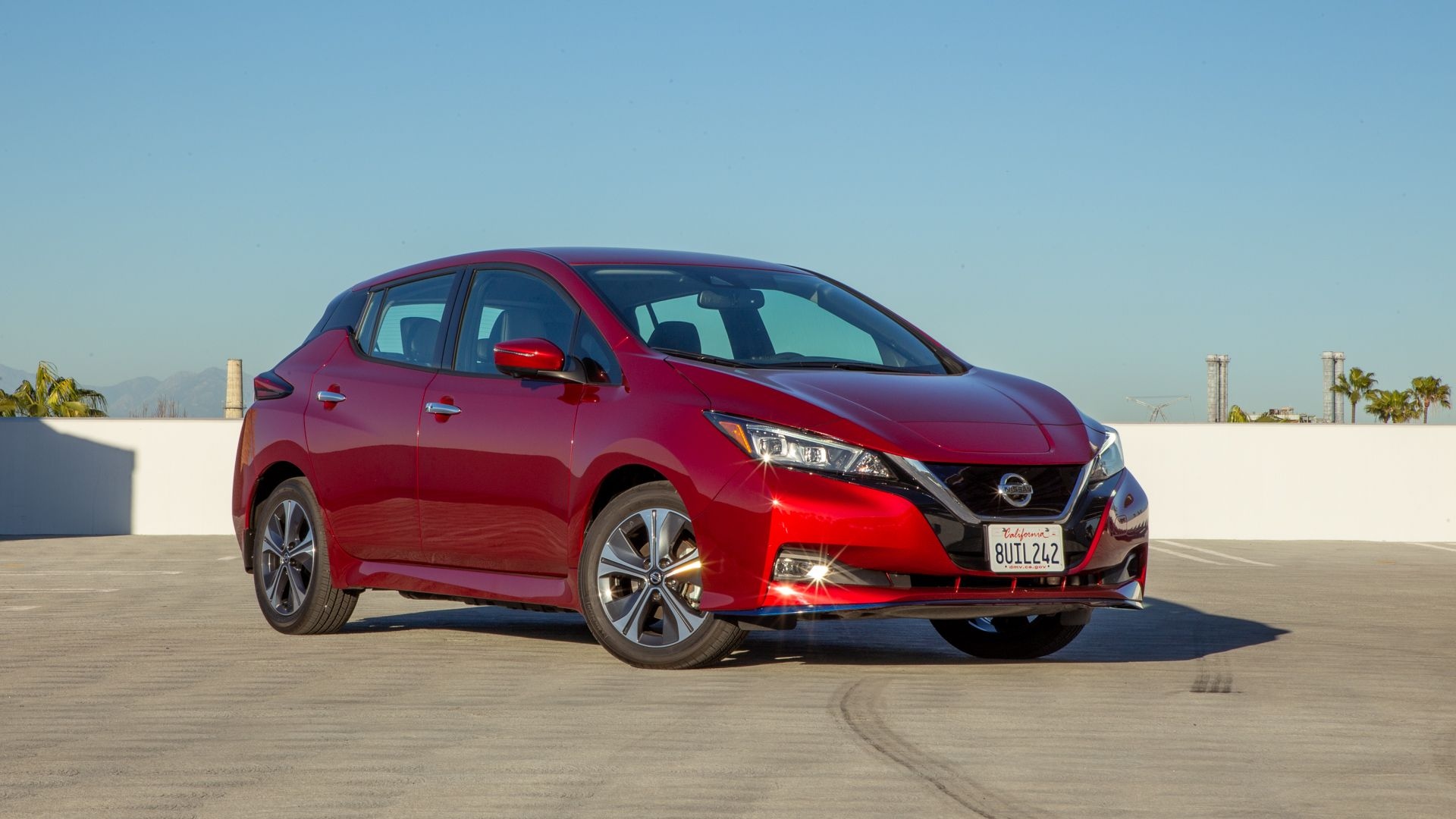
4. Nissan Leaf (with 40 kWh Battery and Active Cooling Modifications)
While the Nissan Leaf is often cited as an example of what not to do in battery thermal management, thanks to early models with passive air cooling, it’s important to distinguish between older and newer versions.
The 40 kWh Leaf, particularly when modified with active cooling or driven in cooler climates, can maintain 80–85% battery capacity even beyond 100,000 miles.
With a large population of Leafs on the road and plenty of long-term owner data, it’s clear that the newer generation Leaf can be reliable if certain conditions are met. Notably, climate, usage habits, and whether thermal upgrades have been made significantly affect battery health outcomes.
The biggest issue with earlier Leafs was the lack of active thermal management, which led to rapid degradation in hot climates. Batteries degrade much faster when exposed to prolonged heat, especially under load or while charging.
Recognizing this issue, many dedicated Leaf owners have installed aftermarket cooling solutions, like fan kits or liquid cooling systems, which dramatically improve thermal stability and mitigate degradation.
While Nissan themselves didn’t integrate liquid cooling into the 40 kWh Leaf, the availability of these modifications has helped many owners preserve their battery packs effectively.
Software updates and smarter charging behavior also contribute to improved battery health. Later versions of the Leaf include firmware that limits maximum charge levels and introduces more refined battery balancing routines, helping to reduce uneven wear on individual cells.
Additionally, newer Leafs support faster onboard chargers, which allow more flexibility in charging times, encouraging owners to adopt healthy practices such as slow overnight charging and avoiding constant top-offs. These behavioral factors can play a huge role in the longevity of any EV battery, but especially one without factory thermal protection.
Lastly, regional climate has a significant impact on the Leaf’s battery durability. In places with cooler ambient temperatures, like the Pacific Northwest, parts of Europe, or northern states in the U.S., Leaf batteries degrade at a much slower rate than those driven in Texas, Arizona, or southern California.
For these cooler regions, even the standard 40 kWh Leaf without modifications may perform well over 100,000 miles. This demonstrates how vehicle longevity isn’t just a matter of engineering but also of environment and owner behavior.
While the Leaf is often overlooked in discussions of long-term battery health, under the right circumstances, it can hold its own against more premium competitors.

5. BMW i3 (with 94 Ah and 120 Ah Battery Packs)
The BMW i3, though not as frequently spotlighted as other EVs, is a quietly reliable performer in the battery degradation game, especially in its later versions with 94 Ah and 120 Ah battery packs.
Owners of the i3 often report retaining well over 80% of their battery capacity even after 100,000 miles, with many vehicles still delivering nearly full range well into their seventh or eighth year of use.
BMW’s approach to EV design focuses heavily on lightweight materials, battery preservation, and consistent software updates, all of which contribute to the i3’s long-term durability.
One of the i3’s most important design choices is its use of a lightweight carbon-fiber-reinforced plastic (CFRP) body. This makes the car significantly lighter than other EVs in its class, reducing the load on the battery during acceleration, regenerative braking, and highway cruising.
A lighter vehicle puts less thermal and mechanical stress on the battery, which slows down the rate of chemical breakdown in the battery cells. Over time, this leads to lower cumulative heat generation and reduced internal resistance buildup, both of which are critical in maintaining a healthy battery.
The battery packs in the i3 are also well-engineered, featuring advanced liquid cooling systems and carefully tuned software that limits exposure to extreme states of charge. BMW was cautious in how it configured the usable battery capacity, leaving a healthy buffer at the top and bottom of the state-of-charge range.
This helps minimize deep discharge cycles and overcharge stress, two of the most common causes of accelerated degradation in lithium-ion batteries. BMW’s software also balances the cells regularly and provides thermal control during both charging and operation, ensuring a consistent internal environment.
Additionally, BMW has been proactive about releasing software updates that improve battery performance and efficiency over time. These updates optimize how the car manages charging, regenerative braking, and energy distribution, further supporting battery longevity.
Even though the i3 lacks the blistering acceleration or high-end range of newer EVs, it excels in consistency, reliability, and long-term battery retention. For urban commuters or second-car households looking for an EV that won’t suddenly lose half its range after a few years, the BMW i3 remains a quietly excellent choice.
5 EVs That Lose Range Fast
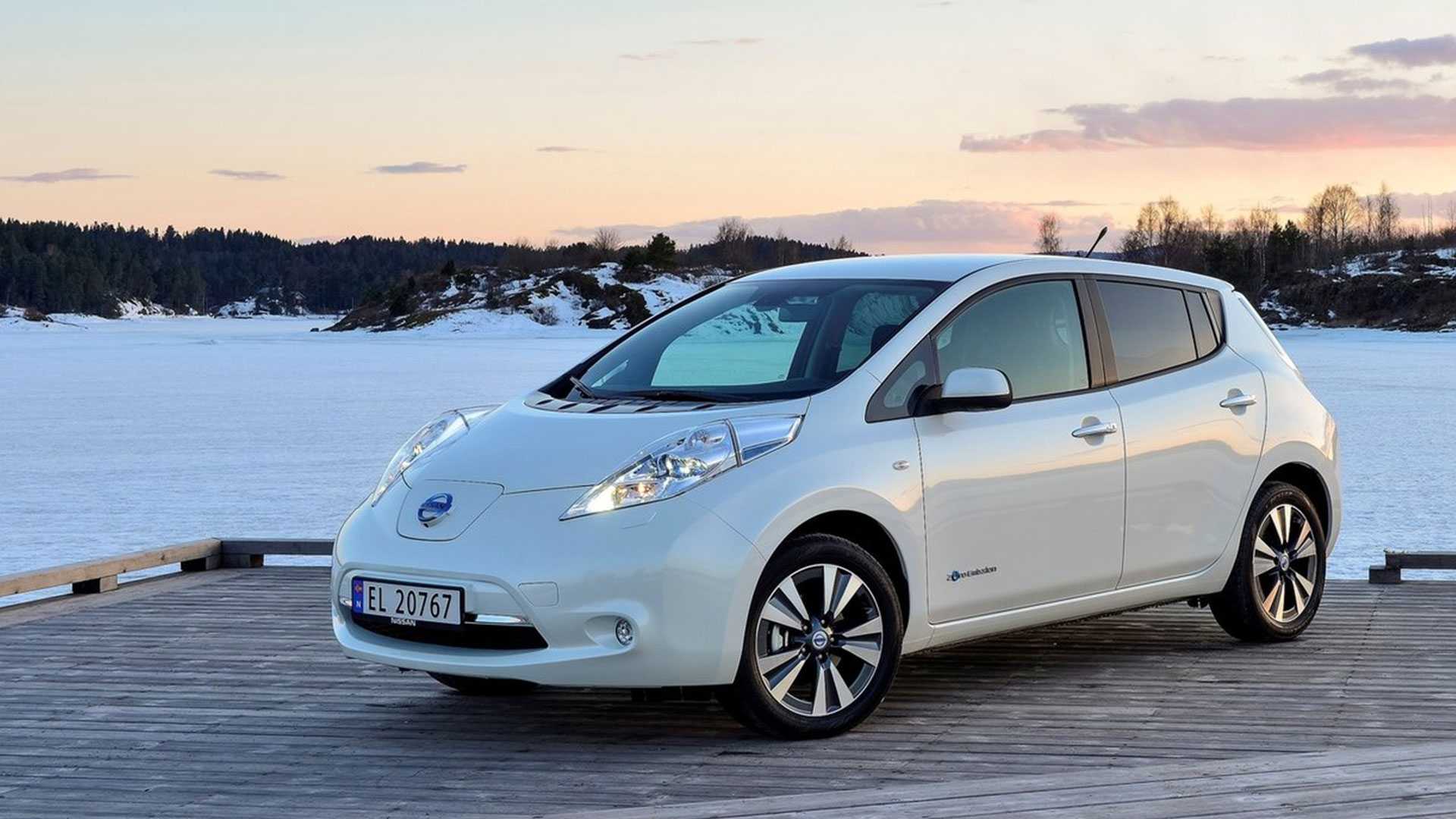
1. Nissan Leaf (Early Models with 24 kWh and 30 kWh Batteries)
The early generations of the Nissan Leaf, especially those with 24 kWh and 30 kWh battery packs, have become infamous for rapid battery degradation, often dropping well below 80% capacity by the time they hit 60,000, 80,000 miles, let alone 100,000.
One of the primary reasons for this decline is the complete absence of an active battery thermal management system. Unlike more modern EVs that use liquid cooling to maintain optimal battery temperatures, the early Leaf relied solely on passive air cooling.
This design decision proved costly, particularly for owners living in hot climates, where elevated ambient temperatures exacerbated battery aging significantly.
The chemistry used in these earlier battery packs, mainly manganese-rich lithium-ion cells, was less thermally stable than what’s used in newer EVs. While these cells offered decent energy density and lower costs, they lacked the long-term resilience of modern NMC or LFP formulations.
Combined with the heat-retaining properties of the Leaf’s design, the result was a battery that was highly vulnerable to stress from both climate and daily driving. In places like Arizona, Texas, and even parts of California, it wasn’t uncommon for Leaf owners to experience 20–30% capacity loss within three to five years of ownership—even with moderate driving habits.
Compounding the issue was the lack of smart battery software controls in earlier Leafs. The system allowed full charges to 100% without warnings or restrictions, and similarly allowed deep discharges. These extremes in state-of-charge are among the worst contributors to lithium-ion degradation.
Without internal protections like buffer zones or adaptive charge rate management, the battery was consistently exposed to damaging conditions. Additionally, the regenerative braking system could further stress the battery during certain driving cycles, particularly downhill stretches where it dumped energy back into an already hot and fully charged pack.
Nissan’s warranty coverage didn’t do much to help consumer confidence either. The degradation threshold for battery replacement under warranty was set so low (around 66% of original capacity) that many owners found themselves stuck with EVs that had become borderline unusable for long commutes.
While later models have improved with the introduction of the 40 kWh and 62 kWh packs, those early Leaf models remain a cautionary tale in EV design, and a reminder of how crucial battery management and thermal regulation are to long-term performance.

2. Fiat 500e
The Fiat 500e was introduced primarily as a compliance car, built not to lead the EV industry, but to help Fiat meet emissions requirements in certain U.S. states. While its charming design and zippy handling gave it some appeal, the 500e has not fared well in terms of battery longevity.
Its relatively small 24 kWh battery pack and complete lack of liquid cooling make it particularly vulnerable to degradation. Many owners report range drops of 20% or more by 60,000 miles, with some units dipping below 70% usable capacity before reaching the 100,000-mile mark.
The Fiat 500e’s battery is especially vulnerable in high-temperature environments. Like the early Nissan Leaf, it relies on passive air cooling, which is insufficient for maintaining stable temperatures under load or during charging. This becomes a major issue during summer months or when fast charging is used frequently.
Without a robust thermal management system, battery cells degrade more quickly, leading to diminished performance, lower range, and higher internal resistance. Over time, this resistance results in additional heat during normal operation, compounding the degradation problem.
Another factor working against the 500e is its limited range from the start. With a maximum EPA range of around 84 miles, any significant loss in battery capacity makes the car dramatically less useful. A 15–20% degradation translates into losing roughly 15–20 miles of range, often enough to turn a once-manageable daily commute into a logistical headache.
In colder climates, the range can drop even further due to battery inefficiency in low temperatures, sometimes leaving the driver with as little as 50–60 miles of usable distance per charge.
Additionally, Fiat has provided very limited software support or OTA (over-the-air) updates to manage or improve battery health. The car also lacks the robust monitoring tools available in other EVs, leaving owners largely in the dark about the true health of their batteries until it becomes painfully obvious.
With limited aftermarket support and few factory-authorized battery replacement programs, the 500e’s long-term ownership experience often ends in frustration, making it a hard sell for those concerned about range stability.
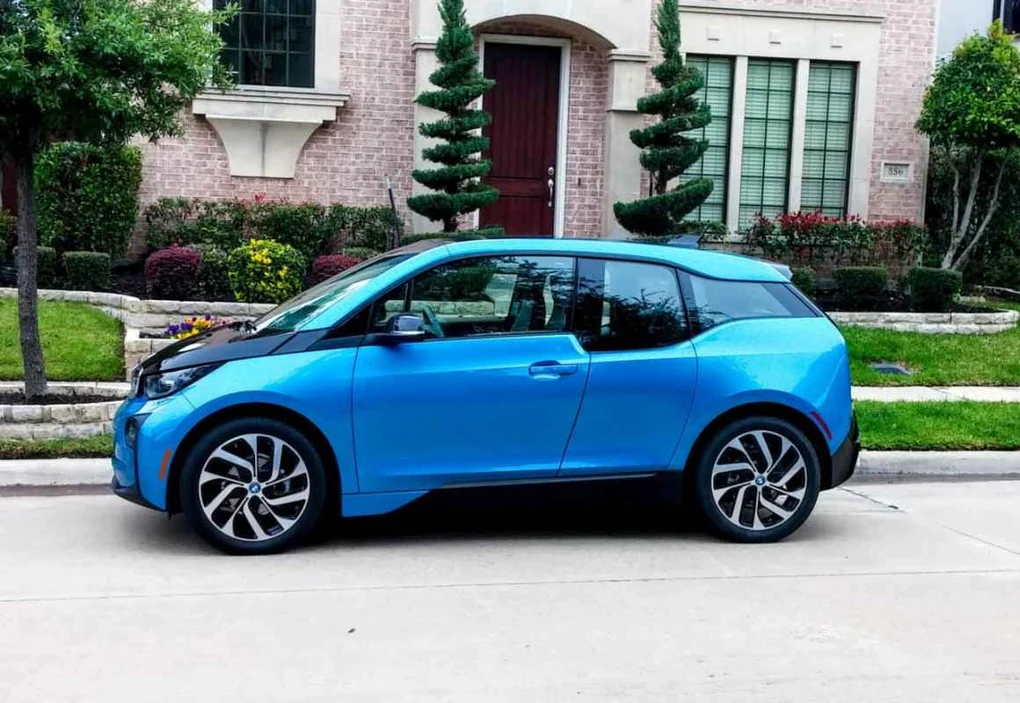
3. BMW i3 (Early 60 Ah Models)
While the later BMW i3 models (like the 94 Ah and 120 Ah variants) are known for excellent battery retention, the original 60 Ah version, launched in 2013, has shown relatively poor battery durability compared to newer standards.
Equipped with a smaller 22 kWh battery pack and limited energy buffer, the early i3 was vulnerable to degradation, especially when driven regularly in highway conditions or subjected to frequent DC fast charging. Owners of the early model i3 have reported degradation as high as 20–30% by the time the odometer crosses the 80,000-mile mark.
One of the contributing factors is the vehicle’s limited usable battery capacity. To keep costs and weight down, BMW opted for a relatively small pack in the first version, giving it a modest EPA range of around 81 miles when new. This left little room for natural degradation without significantly impacting the car’s daily utility.
Unlike the Tesla Model S or even the Leaf, which had some over-provisioned capacity to mitigate the effects of battery wear, the early i3 operated closer to its maximum state of charge, increasing the risk of long-term damage to the cells.
Additionally, while BMW did equip the i3 with liquid cooling and advanced software controls, the early iterations of its battery management system lacked the refinement of later versions. The car did not encourage optimal charging habits and allowed regular full charges to 100%, a practice now understood to accelerate lithium-ion battery wear.
The regen system and rapid torque delivery of the electric motor also placed frequent, high loads on the small pack, particularly in stop-and-go city traffic. These conditions, when repeated daily, likely contributed to faster degradation.
Finally, early i3 owners lacked the benefit of later software updates and battery chemistry improvements that BMW began rolling out with the 94 Ah and 120 Ah packs. As a result, they faced both range anxiety and costly battery repairs without much factory support.
The higher cost of BMW battery replacements further compounded ownership woes. Even though the i3 is a well-engineered and thoughtfully designed car, the early 60 Ah version illustrates how quickly EV technology evolves, and how early adopters often bear the brunt of first-generation growing pains.
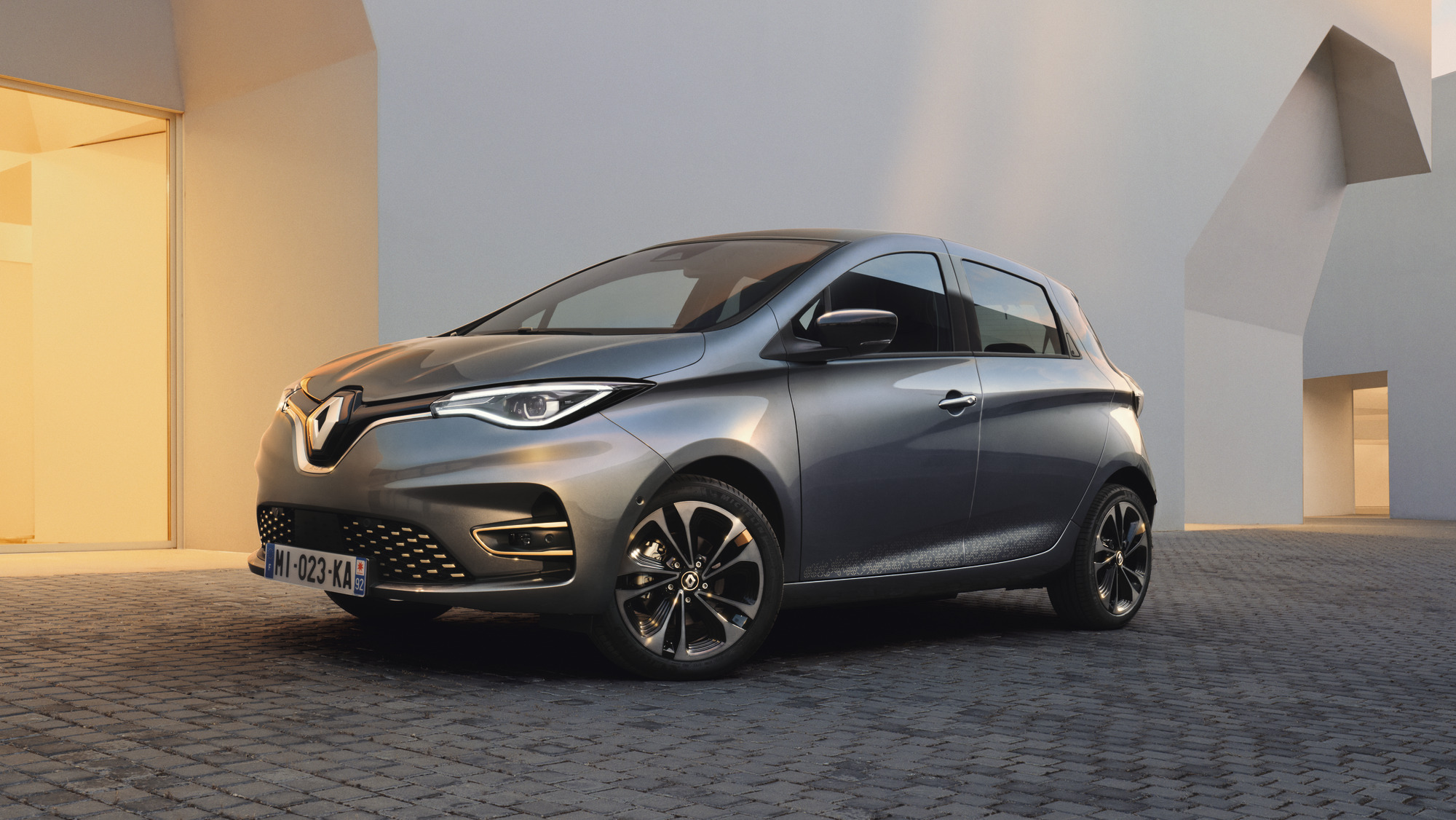
4. Renault Zoe (Pre-2017 Models)
The Renault Zoe has been one of Europe’s most popular EVs due to its affordability and compact design, but early versions, particularly those sold before 2017, have suffered from notable battery degradation.
These models used leased battery packs that were often smaller in capacity (22 kWh) and built with older lithium-ion chemistries that did not hold up well under repeated charging cycles.
By 100,000 miles, many early Zoe owners have reported losing up to 25–30% of their original range, making the car far less useful for longer journeys or even basic urban commutes.
Thermal management was another weak point in these early Zoe models. Renault opted not to include an active cooling system, relying instead on passive air cooling.
While this might have sufficed in France’s temperate climate, owners in warmer parts of Southern Europe quickly began noticing performance issues and permanent range loss.
Without active temperature regulation, battery packs in early Zoes were vulnerable to degradation during both driving and charging, particularly in summer, where battery temperatures would often exceed optimal thresholds for extended periods.
A key issue also stemmed from the battery leasing model. Because users technically didn’t own the batteries, there was limited incentive for Renault to push out updates or improvements for long-term durability.
And while leasing may have reduced upfront costs, it often left drivers with degraded batteries and few options for recourse. Users in many cases could not even request battery replacements unless degradation was extreme (below 60%), and Renault’s diagnostics were often opaque or limited in scope.
On top of all this, the early Zoe also lacked many of the software-driven protections seen in newer EVs. It allowed full charges, lacked adaptive thermal throttling during DC fast charging, and provided minimal user feedback on long-term battery health.
These shortcomings, while understandable for a budget EV of its time, have made the pre-2017 Zoe a high-risk option for used EV buyers. Later versions of the Zoe, with larger battery packs and improved thermal systems, perform far better, but the early models remain a stark reminder of how fast battery tech has evolved.
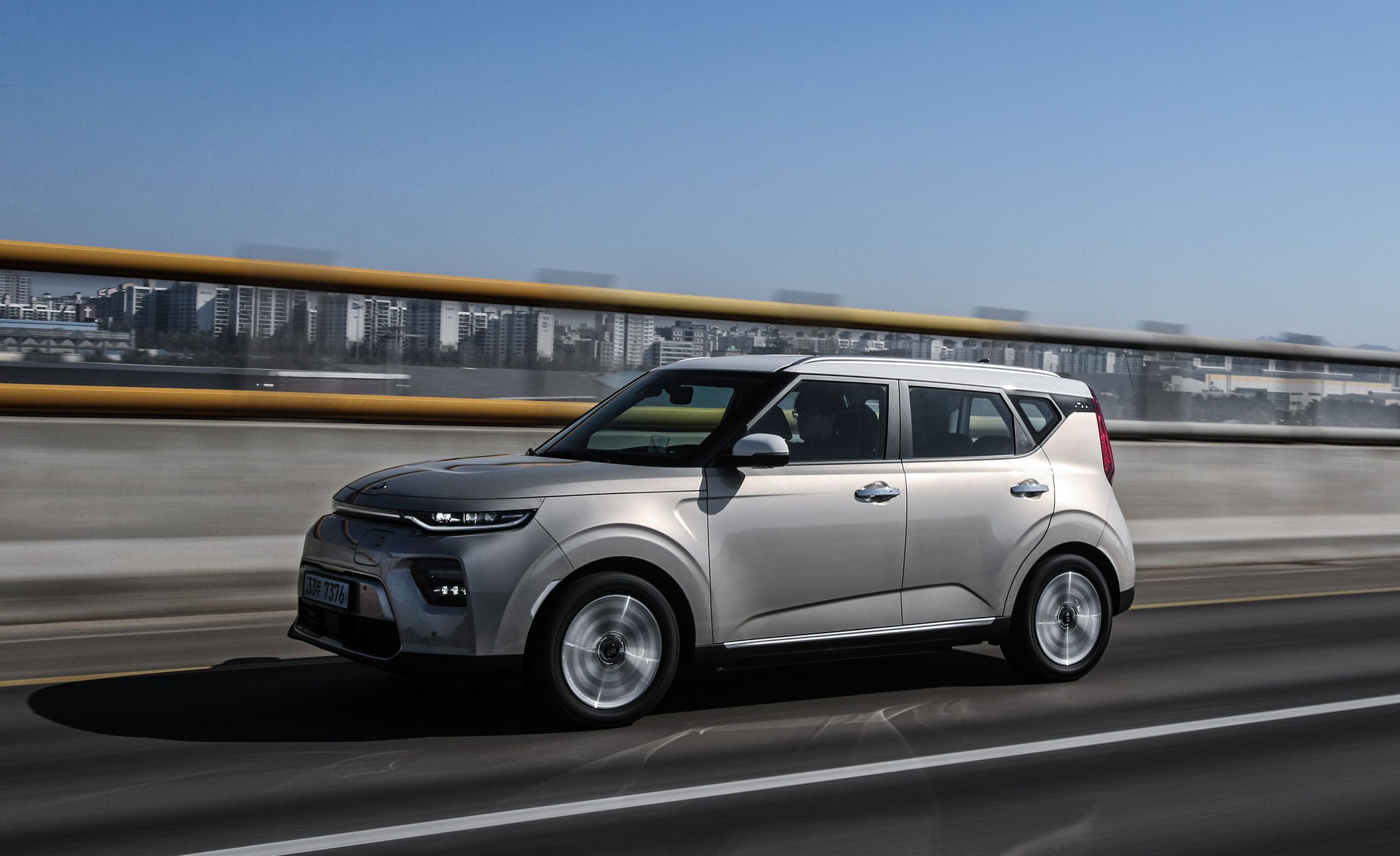
5. Kia Soul EV (2015–2017 Models)
The first-generation Kia Soul EV, produced between 2015 and 2017, has not aged particularly well in terms of battery retention. With a relatively small 27 kWh battery and early-generation lithium-ion polymer chemistry, many early Soul EVs have suffered significant range loss after just 70,000–90,000 miles.
User-reported data shows battery degradation ranging from 20% to as much as 35% in some climates, making this vehicle one of the more vulnerable first-gen EVs when it comes to long-term battery stability.
One of the major flaws was the battery cooling system or lack thereof. The Soul EV used a hybrid cooling approach that was closer to passive air than true liquid cooling. This was insufficient for protecting the pack during fast charging or extended high-speed driving.
In hot climates, this limited thermal regulation meant frequent overheating, especially during summer charging sessions. This directly contributed to the rapid breakdown of cell chemistry and the accumulation of resistance within the pack, leading to both range loss and higher charging times over the vehicle’s life.
Another contributing factor was the vehicle’s somewhat optimistic range estimation. When new, the Soul EV was rated for 93 miles of range, which already limited its utility. But when degradation set in, that number quickly dropped to 75, then 65, and in many cases below 60 miles.
For drivers who needed to rely on the car for longer commutes or couldn’t easily charge at home, this steep decline made the Soul EV impractical within just a few years of ownership. The limited usable range also forced many drivers to fully charge and discharge the battery daily, an unhealthy cycle that only made the problem worse.
Kia eventually improved their battery technology with later models like the 2020 Soul EV and Niro EV, but for early adopters, the damage had already been done. Battery replacements were expensive and not widely supported through warranty unless degradation fell below strict thresholds.
For used EV buyers today, the 2015–2017 Soul EV may seem like an affordable entry into electric driving, but it often comes with a catch: a battery that’s well past its prime and expensive to replace.
Also Read: 5 US-Built Cars That Last and 5 That Shouldn’t Have Left the Factory
As we move further into the era of electrified transportation, one of the most defining attributes of a great electric vehicle isn’t just how it performs when brand new, but how well it holds up as the miles accumulate. EV batteries are expensive to replace, and as such, their degradation curves are a vital part of the total cost of ownership.
A 250-mile range may sound great on paper, but if that number plummets to 180 or less within a few years, the vehicle may no longer meet a driver’s needs. That’s why understanding battery retention after 100,000 miles is not just helpful, it’s essential for both new and used EV buyers.
The five EVs highlighted in the first half of this article, Tesla Model 3, Chevrolet Bolt EV, Hyundai Kona Electric, the newer Nissan Leaf (with thermal modifications), and the later BMW i3, have shown that with thoughtful engineering, robust battery management systems, and proper chemistry choices, EVs can remain viable well beyond the 100,000-mile mark.
These vehicles offer peace of mind for owners, demonstrating that range loss doesn’t have to be a dealbreaker if the car is built to protect its battery. Efficient thermal regulation, smart software algorithms, and even simple user feedback mechanisms can all contribute to the long-term health of the battery.
Tesla, for example, pairs high-quality battery cells with advanced software and active cooling systems to deliver outstanding long-term results. Hyundai and GM take a slightly different approach, emphasizing conservative charge curves and robust temperature controls to preserve battery capacity.
Even BMW, with its lightweight i3 platform, shows how thoughtful design decisions like using a smaller, less-stressed powertrain and reinforcing range protection through software, can lead to solid durability.
These vehicles prove that with the right mix of materials, systems, and real-world feedback, battery degradation can be minimized.
On the other hand, the second group, consisting of the early Nissan Leaf, Fiat 500e, first-gen BMW i3 (60 Ah), pre-2017 Renault Zoe, and first-gen Kia Soul EV, illustrates how shortcomings in design, thermal management, or battery chemistry can lead to significant problems over time.
Whether due to passively cooled batteries, early-stage lithium-ion technologies, or rushed designs built for regulatory compliance, these vehicles suffer from accelerated range loss that can severely limit their practical utility after a few years of use.
While some of these EVs were pioneers in their own right, they lacked the refinements and technologies necessary to ensure a long and healthy battery lifespan.
It’s worth noting that early EVs, many of which fall into the “rapid degradation” category, were often built before today’s best practices in battery care were established. Battery chemistry has improved, software controls have become more sophisticated, and consumer awareness has increased.
What was acceptable or even impressive in 2013 may be a liability by 2025 standards. For used EV buyers, this means doing due diligence is more important than ever. Ask for battery health reports, understand the vehicle’s charging history, and be cautious of models known for high degradation.
In the end, battery degradation is not an EV flaw, it’s a natural part of the life cycle of any lithium-ion system. But how quickly that degradation occurs depends entirely on how well a vehicle is designed to manage it. If you’re planning to buy an EV, especially one that already has some miles on it, this knowledge becomes a powerful tool.
You want a car that keeps its promises, not just for the first year or two, but for a decade or more. Fortunately, as the industry matures, more manufacturers are learning from the mistakes of the past and building EVs that will retain their value, performance, and range long after the odometer hits six figures.

